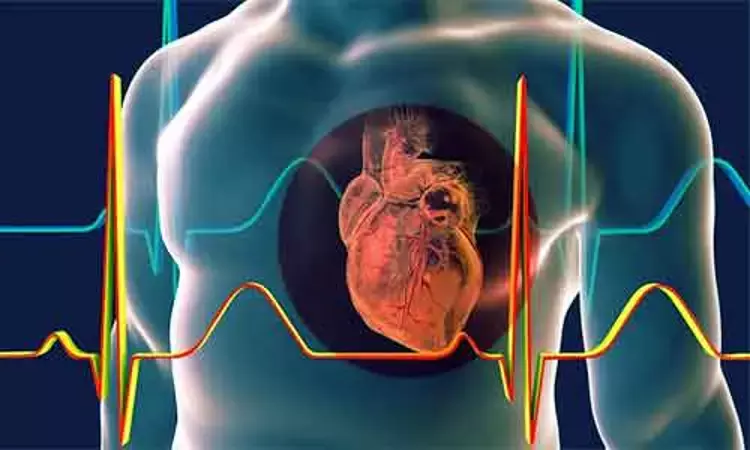- Home
- Medical news & Guidelines
- Anesthesiology
- Cardiology and CTVS
- Critical Care
- Dentistry
- Dermatology
- Diabetes and Endocrinology
- ENT
- Gastroenterology
- Medicine
- Nephrology
- Neurology
- Obstretics-Gynaecology
- Oncology
- Ophthalmology
- Orthopaedics
- Pediatrics-Neonatology
- Psychiatry
- Pulmonology
- Radiology
- Surgery
- Urology
- Laboratory Medicine
- Diet
- Nursing
- Paramedical
- Physiotherapy
- Health news
- Fact Check
- Bone Health Fact Check
- Brain Health Fact Check
- Cancer Related Fact Check
- Child Care Fact Check
- Dental and oral health fact check
- Diabetes and metabolic health fact check
- Diet and Nutrition Fact Check
- Eye and ENT Care Fact Check
- Fitness fact check
- Gut health fact check
- Heart health fact check
- Kidney health fact check
- Medical education fact check
- Men's health fact check
- Respiratory fact check
- Skin and hair care fact check
- Vaccine and Immunization fact check
- Women's health fact check
- AYUSH
- State News
- Andaman and Nicobar Islands
- Andhra Pradesh
- Arunachal Pradesh
- Assam
- Bihar
- Chandigarh
- Chattisgarh
- Dadra and Nagar Haveli
- Daman and Diu
- Delhi
- Goa
- Gujarat
- Haryana
- Himachal Pradesh
- Jammu & Kashmir
- Jharkhand
- Karnataka
- Kerala
- Ladakh
- Lakshadweep
- Madhya Pradesh
- Maharashtra
- Manipur
- Meghalaya
- Mizoram
- Nagaland
- Odisha
- Puducherry
- Punjab
- Rajasthan
- Sikkim
- Tamil Nadu
- Telangana
- Tripura
- Uttar Pradesh
- Uttrakhand
- West Bengal
- Medical Education
- Industry
CAD and CMD common in HFpEF patients and may serve as therapeutic targets: JAMA

UK: A recent study in the journal JAMA Cardiology has shed light on the prevalence of coronary artery disease (CAD) and coronary microvascular dysfunction (CMD) in patients with heart failure with preserved ejection fraction (HFpEF). 91% of HFpEF patients were found to have evidence of epicardial CAD, CMD, or both. Of the people without obstructive CAD, 81% had CMD.
Obstructive epicardial CAD and CMD are common and often unrecognized in hospitalized patients with HFpEF and may be therapeutic targets, wrote the lead author Christopher J. Rush, University of Glasgow, Glasgow, United Kingdom, and colleagues.
Myocardial ischemia due to epicardial CAD, CMD, or both may be a disease mechanism and therapeutic target in some patients with heart failure with HFpEF. Myocardial ischemia can result in left-ventricular (LV) diastolic and systolic dysfunction -- both of which are common in HFpEF. Inflammation-associated CMD may also contribute to pathophysiologic characteristics of HFpEF as supported by noninvasive studies, an autopsy series, and small invasive studies.
However, according to Rush and the team, the prevalence of epicardial CAD, CMD, and coronary endothelial dysfunction have not been systematically studied in HFpEF patients. Considering this they aimed to examine the prevalence of CAD and CMD in hospitalized patients with HFpEF in a prospective, multicenter, cohort study conducted between January 2, 2017, and August 1, 2018.
A total of 106 consecutive patients hospitalized with HFpEF were evaluated. Participants underwent coronary angiography with guidewire-based assessment of coronary flow reserve, index of microvascular resistance, and fractional flow reserve, followed by coronary vasoreactivity testing.
Cardiac magnetic resonance imaging was performed with late gadolinium enhancement and assessment of extracellular volume. Myocardial perfusion was assessed qualitatively and semiquantitatively using the myocardial-perfusion reserve index.
Main outcomes included the prevalence of obstructive epicardial CAD, CMD, and myocardial ischemia, infarction, and fibrosis.
Of 106 participants enrolled, 75 had coronary angiography, 62 had assessment of coronary microvascular function, 41 underwent coronary vasoreactivity testing, and 52 received cardiac magnetic resonance imaging.
The research revealed the following findings:
- Obstructive epicardial CAD was present in 38 of 75 participants (51%); 19 of 38 (50%) had no history of CAD.
- Endothelium-independent CMD (ie, coronary flow reserve <2.0 and/or index of microvascular resistance ≥25) was identified in 41 of 62 participants (66%).
- Endothelium-dependent CMD (ie, abnormal coronary vasoreactivity) was identified in 10 of 41 participants (24%).
- 45 of 53 participants (85%) had evidence of CMD and 29 of 36 (81%) of those without obstructive epicardial CAD had CMD.
- Cardiac magnetic resonance imaging findings included myocardial-perfusion reserve index less than or equal to 1.84 (ie, impaired global myocardial perfusion) in 29 of 41 patients (71%), visual perfusion defect in 14 of 46 patients (30%), ischemic late gadolinium enhancement (ie, myocardial infarction) in 14 of 52 patients (27%), and extracellular volume greater than 30% (ie, diffuse myocardial fibrosis) in 20 of 48 patients (42%).
- Patients with obstructive CAD had more adverse events during follow-up (28 [74%]) than those without obstructive CAD (17 [46%]).
"In this cohort study, epicardial CAD and CMD were common in the patients analyzed," the authors concldued. "These conditions might be unrecognized in hospitalized patients with HFpEF and may be therapeutic targets."
Reference:
Rush CJ, Berry C, Oldroyd KG, et al. Prevalence of Coronary Artery Disease and Coronary Microvascular Dysfunction in Patients With Heart Failure With Preserved Ejection Fraction. JAMA Cardiol. 2021;6(10):1130–1143. doi:10.1001/jamacardio.2021.1825
Dr Kamal Kant Kohli-MBBS, DTCD- a chest specialist with more than 30 years of practice and a flair for writing clinical articles, Dr Kamal Kant Kohli joined Medical Dialogues as a Chief Editor of Medical News. Besides writing articles, as an editor, he proofreads and verifies all the medical content published on Medical Dialogues including those coming from journals, studies,medical conferences,guidelines etc. Email: drkohli@medicaldialogues.in. Contact no. 011-43720751


